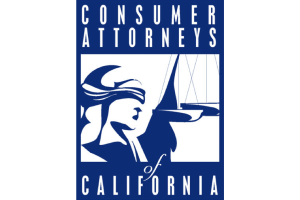- Free Consultation: 760-571-5500 Tap Here to Call Us
Rising Highway Deaths in California

Is it safe to travel on the highways in California? Whether you are commuting to work in San Diego on the I-5 or are taking a vacation that requires you to drive with your family along the I-10, it is extremely important to be aware of serious car accident risks. According to a recent report from The California Report and KQED News, highway traffic fatalities are on the rise in California despite a relatively steady national number of deaths on America’s roadways. What is happening on California’s highways that makes driving in our state more dangerous? What can you do if you have suffered injuries as a result of another driver’s negligence?
Federal Highway Traffic Safety Data Highlights Substantial Death Toll
As the recent report makes clear, new federal highway safety data shows that “the traffic death toll in California continues to trend upward even as the number of people who die on roads nationwide holds steady.” Last year, the National Highway Traffic Safety Administration (NHTSA) identified nearly 33,000 auto accident fatalities and about 2.3 million accidents that resulted in injuries. While that death toll might strike you as shockingly high—and it is a high number, to be sure—it actually represents a decline in the total number of nationwide auto accident deaths from the previous year. Between 2013 and 2014, auto accident collisions caused 44 fewer fatalities.
Several decades ago, yearly traffic fatalities tended to total more than 50,000, but we have seen that number decreasing in a meaningful way throughout the 1980s, 1990s, and 2000s. The lowest number we have seen yet occurred in 2011, when the NHTSA reported a total of 32,479 car accident deaths. But the NHTSA’s recent report suggests that the number is likely to increase from last year—it is already up by more than 8% from the same period in 2014.
California is, unfortunately, leading the nation in terms of highway deaths relative to the total population. In 2014, California reported a total of 3,074 motor vehicle fatalities. That number represents a 2.5% increase from 2013, when the total death toll was 3,000. The lowest number of fatal highway accidents we have seen in California was back in 2010 when the total was 2,715. Since then, the number has increased at a relatively striking pace.
Difficulty Pinpointing the Impact of Smartphone Use
Many commentators suspect that the rise in California highway fatalities has a connection to the use of smartphones on the road. According to a spokesperson with the California Office of Traffic Safety, most Californians recognize that smartphone use is “a huge problem.” Indeed, “investigators and analysts estimate that personal electronic devices are involved in 10% to 20% of crashes.” Yet determining an absolute number is difficult because of the nature of the traffic violation.
With other traffic violations, law enforcement officers have evidence to back up their suspicions. For example, a charge of driving under the influence (DUI) often is backed up with a measurement of a driver’s blood alcohol concentration (BAC). Or, if a driver is going too fast, a law enforcement officer has evidence of the excessive speed. With smartphone use, unless there is an eyewitness, it is difficult to know whether or not a driver may have been illegally using a cellphone while behind the wheel.
If you were injured in a car accident caused by a distracted driver, you should speak with a dedicated San Diego car accident attorney to learn more about filing a claim for compensation. Contact the Walton Law Firm today.
See Related Blog Posts: Holiday Driving Hazards NTSB Says Product Recall System is Broken









